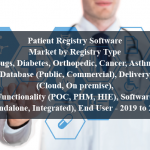OVERVIEW
The Clinical Decision Support Systems Market is currently valued at USD 1.7 billion in 2024 and will be growing at a CAGR of 7.5% over the forecast period to reach an estimated USD 2.5 billion in revenue in 2029. Clinical Decision Support Systems (CDSS) represent a pivotal advancement in healthcare technology, offering invaluable assistance to clinicians in making well-informed decisions regarding patient care. These systems leverage a combination of medical knowledge, patient data, and algorithms to provide real-time guidance and recommendations at the point of care. By analyzing vast amounts of clinical data, including patient history, lab results, and best practice guidelines, CDSS can help clinicians identify potential diagnoses, select appropriate treatments, and avoid errors or oversights. The market for CDSS is witnessing rapid growth, driven by the increasing demand for improved patient outcomes, the adoption of electronic health records (EHRs), and advancements in artificial intelligence and machine learning technologies. As healthcare providers strive to enhance efficiency, reduce costs, and deliver high-quality care, CDSS emerges as a critical tool in achieving these objectives, shaping the future landscape of healthcare delivery.
The rising prevalence of chronic diseases and the aging population worldwide are placing greater pressure on healthcare systems to deliver efficient and effective care. CDSS offers a means to optimize clinical workflows, improve diagnostic accuracy, and enhance treatment outcomes, thus addressing these healthcare challenges. Secondly, regulatory mandates and initiatives aimed at promoting the adoption of healthcare IT solutions, such as electronic health records (EHRs), are driving the integration of CDSS into healthcare settings. Furthermore, advancements in artificial intelligence (AI) and machine learning technologies are expanding the capabilities of CDSS, enabling more sophisticated analysis of patient data and the development of personalized treatment plans. Additionally, the growing focus on value-based care and the need to reduce medical errors and healthcare costs are incentivizing healthcare providers to invest in CDSS solutions. Collectively, these factors are propelling the demand for CDSS and shaping its trajectory as an indispensable component of modern healthcare delivery.
Table of Content
Market Dynamics
Drivers:
The rising prevalence of chronic diseases and the aging population worldwide are placing greater pressure on healthcare systems to deliver efficient and effective care. CDSS offers a means to optimize clinical workflows, improve diagnostic accuracy, and enhance treatment outcomes, thus addressing these healthcare challenges. Secondly, regulatory mandates and initiatives aimed at promoting the adoption of healthcare IT solutions, such as electronic health records (EHRs), are driving the integration of CDSS into healthcare settings. Furthermore, advancements in artificial intelligence (AI) and machine learning technologies are expanding the capabilities of CDSS, enabling more sophisticated analysis of patient data and the development of personalized treatment plans. Additionally, the growing focus on value-based care and the need to reduce medical errors and healthcare costs are incentivizing healthcare providers to invest in CDSS solutions. Collectively, these factors are propelling the demand for CDSS and shaping its trajectory as an indispensable component of modern healthcare delivery.
Key Offerings:
Clinical Decision Support Systems (CDSS) offer a range of key offerings that significantly enhance the delivery of healthcare services. Firstly, these systems provide real-time access to evidence-based medical knowledge and best practice guidelines, empowering clinicians with up-to-date information to support their decision-making process. Additionally, CDSS leverage advanced algorithms and analytics to analyze vast amounts of patient data, including medical history, diagnostic tests, and treatment options, thereby assisting clinicians in identifying potential diagnoses and personalized treatment plans. Moreover, CDSS facilitate clinical workflow optimization by integrating seamlessly with electronic health record (EHR) systems, enabling streamlined access to patient information and decision support tools at the point of care. Furthermore, some CDSS solutions offer alerts and reminders to clinicians regarding medication interactions, allergy risks, and preventive care interventions, thereby reducing medical errors and improving patient safety. Overall, the key offerings of CDSS encompass evidence-based decision support, personalized treatment recommendations, clinical workflow optimization, and patient safety enhancement, all of which contribute to improved healthcare outcomes and patient satisfaction.
Restraints :
Clinical Decision Support Systems (CDSS) have many advantages, but there are a number of barriers preventing their general adoption and use in healthcare settings. First off, the smooth integration of CDSS with current electronic health record (EHR) systems and other healthcare IT infrastructure is severely hampered by interoperability issues. Compatibility problems are frequently caused by non-standardized data formats and interfaces, which reduces the usefulness of CDSS in assisting with clinical decision-making. Second, there are significant challenges in implementing CDSS due to worries about data security and privacy, especially with strict regulations like the Health Insurance Portability and Accountability Act (HIPAA). The implementation of CDSS systems may be hampered by the need for healthcare organisations to make sure that strong safeguards are in place to secure patient information and adhere to data protection laws. Additionally, physicians have worries about the dependability and credibility of suggestions given by the system due to the complexity of CDSS algorithms and the possibility of algorithmic bias. To allay these worries and promote physician trust in the technology, it is imperative to guarantee accountability and openness in the creation and verification of CDSS algorithms. Furthermore, healthcare practitioners’ limited resources, especially in resource-constrained contexts, may make it difficult for them to invest in the training and implementation of CDSS, which would restrict access to these important decision support tools. Overall, overcoming the obstacles that currently prevent the widespread acceptance and use of CDSS in healthcare will require addressing interoperability issues, improving data security and privacy protections, minimising algorithmic bias, and addressing financial limits.
Regional Information:
• In North America, the adoption of Clinical Decision Support Systems (CDSS) is driven by robust healthcare IT infrastructure and regulatory mandates promoting the use of electronic health records (EHRs). The region boasts a mature healthcare technology market, characterized by a high level of awareness and investment in CDSS solutions. Additionally, the presence of leading healthcare IT vendors and research institutions fuels innovation in CDSS development. However, interoperability challenges persist due to the fragmented nature of healthcare delivery systems and variations in EHR platforms across different states and provinces.
• In Europe, stringent data privacy regulations such as the General Data Protection Regulation (GDPR) influence the adoption of CDSS, necessitating robust measures for ensuring patient data security and compliance. Despite this, the region demonstrates a strong commitment to leveraging healthcare IT to improve patient outcomes, with government initiatives promoting the integration of CDSS into clinical practice. Interoperability remains a challenge, particularly in cross-border healthcare settings where varying regulatory frameworks and language barriers complicate data exchange.
•In Asia-Pacific, the adoption of CDSS is driven by the increasing prevalence of chronic diseases, rapid digitization of healthcare systems, and government initiatives aimed at enhancing healthcare quality and access. Countries like China and India are witnessing significant growth in CDSS adoption, fueled by investments in healthcare infrastructure and advancements in AI and machine learning technologies. However, disparities in healthcare infrastructure and resource constraints pose challenges to widespread adoption, particularly in rural and underserved areas.
Recent Developments:
• In April 2023, Microsoft (US) and Epic Systems Corporation (US) expanded their long-standing strategic collaboration to develop and integrate generative AI into healthcare by combining the scale and power of Azure OpenAI Service with Epic’s industry-leading electronic health record (EHR) software. This co-innovation is focused on delivering a comprehensive array of generative AI- powered solutions integrated with Epic’s EHR to increase productivity, enhance patient care, and improve financial integrity of health systems globally.
• In April 2023, Elsevier B.V. (UK) announced the launch of an upgraded version of its clinical decision support solution, ClinicalKey. This enhanced platform incorporates a comprehensive drug compendium, a cutting-edge mobile application, and seamless integration into Electronic Health Records (EHR). These new features have been strategically designed to offer physicians in the United States and international markets convenient access to reliable and extensive medical content directly at the point of care, speeding up diagnosis and treatment for their patients
Key Players:
Cerner Corporation, Epic Systems Corporation, IBM Watson Health, McKesson Corporation, Allscripts Healthcare Solutions, Inc., MEDITECH, Wolters Kluwer Health, Philips Healthcare, Siemens Healthineers, and GE Healthcare.
1) What is the projected market value of the Clinical Decision Support Systems Market?
– The Clinical Decision Support Systems Market is expected to reach an estimated value of USD 2.5 billion in revenue by 2029.
2) What is the estimated CAGR of the Clinical Decision Support Systems Market over the 2024 to 2029 forecast period?
– The CAGR is estimated to be 7.5% for the Clinical Decision Support Systems Market over the 2024 to 2029.
3) Who are the key players in the Clinical Decision Support Systems Market?
– Cerner Corporation, Epic Systems Corporation, IBM Watson Health, McKesson Corporation, Allscripts Healthcare Solutions, Inc., MEDITECH, Wolters Kluwer Health, Philips Healthcare, Siemens Healthineers, and GE Healthcare.
4) What are the drivers for the Clinical Decision Support Systems Market?
– The increasing prevalence of chronic diseases and aging populations worldwide are putting pressure on healthcare systems to deliver efficient care. CDSS offers a solution to optimize clinical workflows, improve diagnostic accuracy, and enhance treatment outcomes. Regulatory mandates, AI advancements, and value-based care are driving CDSS integration into healthcare settings, enhancing its role in modern healthcare delivery.
5) What are the restraints and challenges in the Clinical Decision Support Systems Market?
– Clinical Decision Support Systems (CDSS) in healthcare face several challenges, including interoperability issues, concerns about data privacy and security, and algorithmic bias. These issues limit the effectiveness of CDSS in clinical decision-making. Additionally, the complexity of CDSS algorithms raises concerns about the reliability and trustworthiness of system-generated recommendations. Financial constraints also limit access to CDSS in resource-limited settings. To overcome these restraints, healthcare organizations must address interoperability challenges, enhance data security and privacy measures, mitigate algorithmic bias, and address financial constraints.
6) What are the key applications and offerings of the Clinical Decision Support Systems Market?
– Clinical Decision Support Systems (CDSS) improve healthcare services by providing real-time access to evidence-based medical knowledge, analyzing patient data, and facilitating clinical workflow optimization. They integrate with electronic health record systems, reducing errors and improving patient safety. CDSS solutions also offer alerts for medication interactions, allergy risks, and preventive care interventions, enhancing healthcare outcomes and patient satisfaction.
7) Which region is expected to drive the market for the forecast period?
North America is expected to have the highest market growth from 2024 to 2029
Why Choose Us?
Insights into Market Trends: Global Market Studies reports provide valuable insights into market trends, including market size, segmentation, growth drivers, and market dynamics. This information helps clients make strategic decisions, such as product development, market positioning, and marketing strategies.
Competitor Analysis: Our reports provide detailed information about competitors, including their market share, product offerings, pricing, and competitive strategies. This data can be used to inform competitive strategies and to identify opportunities for growth and expansion.
Industry Forecasts: Our reports provide industry forecasts, which will inform your business strategies, such as investment decisions, production planning, and workforce planning. These forecasts can help you to prepare for future trends and to take advantage of growth opportunities.
Access to Industry Experts: Our solutions include contributions from industry experts, including analysts, consultants, and subject matter experts. This access to expert insights can be valuable for you to understand the market.
Time and Cost Savings: Our team at Global Market Studies can save you time and reduce the cost of conducting market research by providing comprehensive and up-to-date information in a single report, avoiding the need for additional market research efforts.












